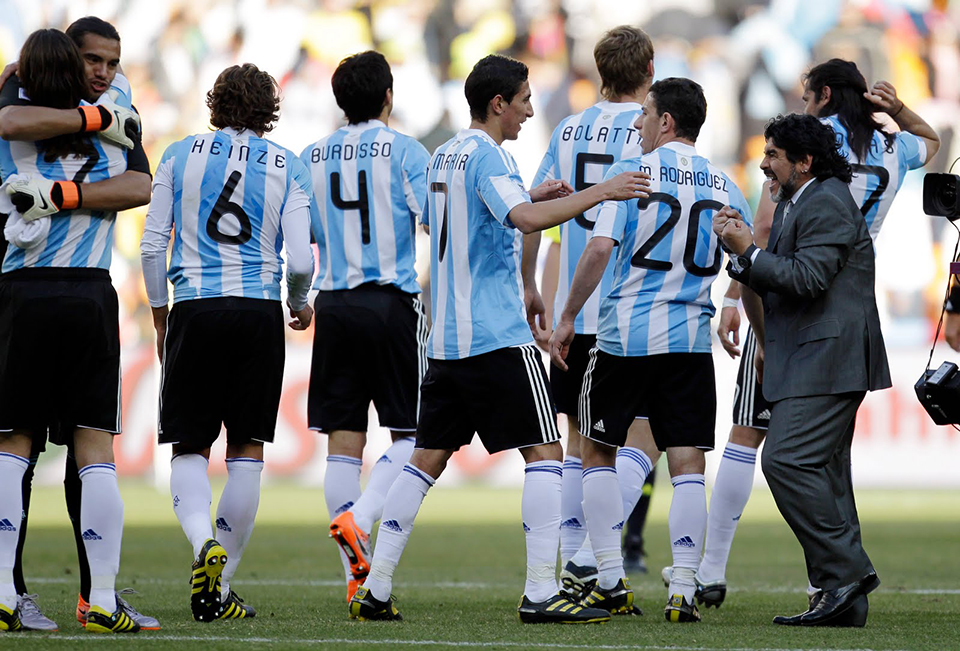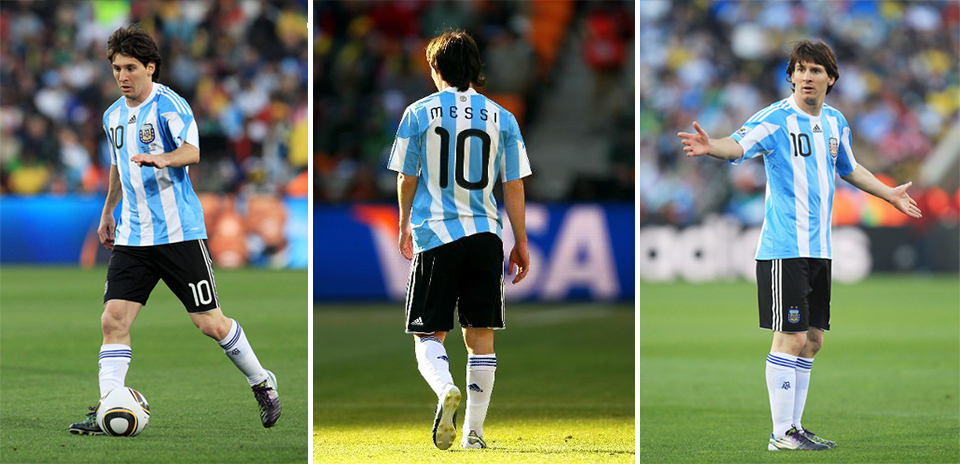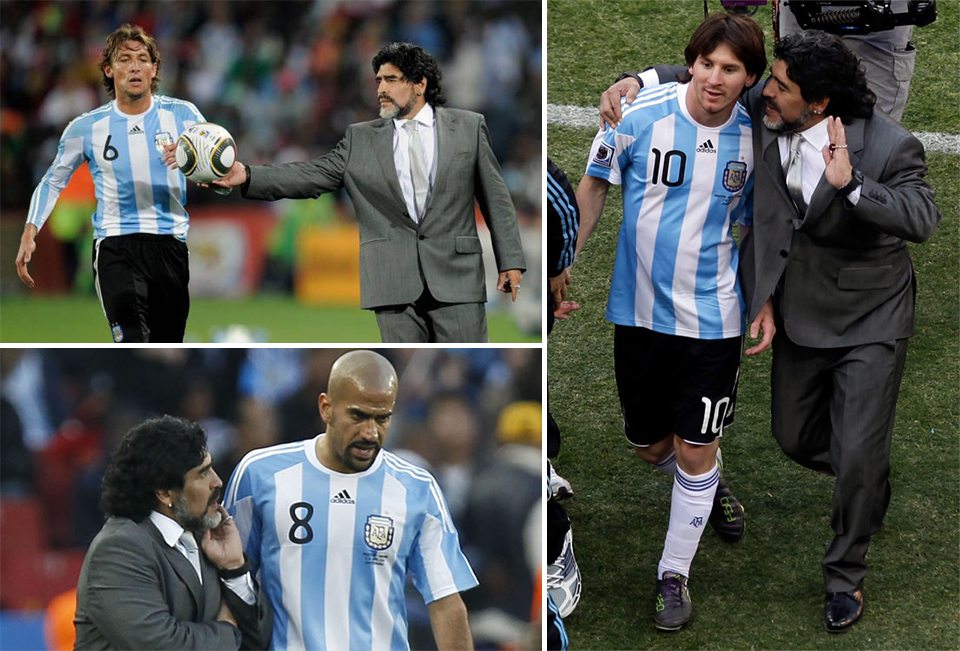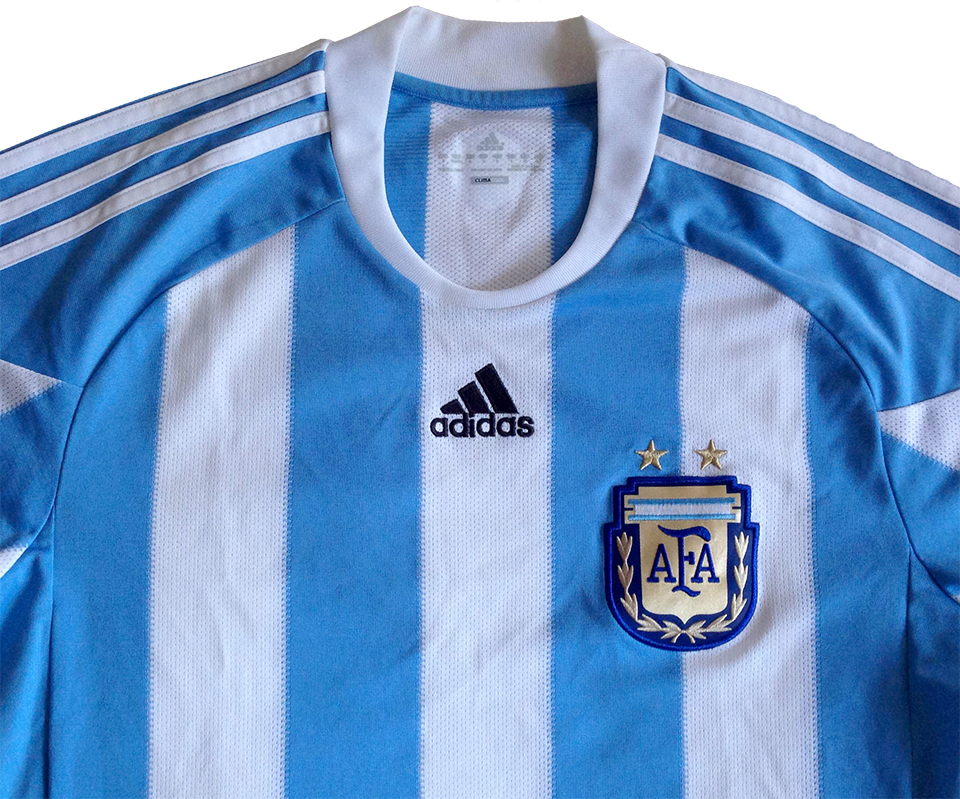When Argentina unveiled their new kit for the 2010 World Cup, the first thing keen observers noticed was that the design of the shirt was a clear nod to that worn by the South Americans the last time they won the tournament in 1986. Though it wasn’t the first time adidas had referenced a celebrated shirt from the modern era (see France’s 1998 update of their Euro 84 shirt), it was unusual in that Argentina’s kit in ’86 was produced by the French company Le Coq Sportif. But the decision did have a strange logic to it. After all, Argentina’s coach in South Africa would be none other than the man who had captained them to victory twenty-four years earlier, Diego Armando Maradona. Though Maradona wouldn’t be wearing the shirt himself this time, presumably the thinking was that if his Argentina team wore a similar kit to that worn in the sunshine of Mexico, this year’s tournament would perhaps have a similar outcome.

To casual fans the 2010 shirt may have appeared like any other worn by the albiceleste, but there were several details that evidently drew from its iconic predecessor. The first of these was the simple crew neck collar: Argentina had only worn V-necks, fold-over collars, buttoned collars and modern variations of the same in recent years. Likewise, for the first time since the mid-nineties there was no black trim on the shirt. Perhaps the most noticeable similarity to the ’86 shirt was the AFA badge, set on a bold blue background that had been absent since 1991. Rather than be placed over a blue or white stripe, the badge itself was positioned over the point where the two stripes meet, just as in ’86.

Attention had even been paid to the stripes’ sequence and arrangement, with white being chosen for the central stripe (a rarity outside the ’86 tournament). Even the shirt’s fabric was a modern update on the breathable airtex material originally used to beat the heat in Mexico. While the ubiquitous adidas branding dictated somewhat the design of the sleeves, and the classic Argentina numbers were long gone, adidas had done a fine job at updating a classic. In practice of course, the kit bore little resemblance to ’86. The players’ shirts would become inevitably tarnished with the modern-day clutter of front numbers and sleeve patches, while the beautiful gold embroidered badge used on commercially available replica shirts was replaced by a plastic heat-pressed version (I still don’t understand this, but I’m sure adidas would claim it makes the shirt half an ounce lighter). In addition, temperatures in South Africa were considerably lower than they’d been in Mexico, causing several players to opt for a long-sleeved “Techfit” version of the shirt.

Maradona had drawn criticism for his squad selection prior to the tournament. Many were surprised to see Javier Zanetti and Esteban Cambiasso miss out at the expense of less experienced players, particularly since both had been instrumental in achieving a historic treble for Inter that season. He’d also kept faith with aging midfielder Juan Sebastián Verón, now in the autumn of his career at Estudiantes. Argentina got off to a positive start in South Africa, winning all three of their group games. Fans looked to new number ten Lionel Messi to inspire the team, but the Barcelona star was outshone by his teammates. Defender Gabriel Heinze headed the only goal against Nigeria, then Gonzalo Higuain grabbed a hat-trick against South Korea. A number of first-choice players were rested for the final match with Greece, where two Martins — defender Demichelis and veteran striker Palermo — got on the scoresheet.


Argentina faced Mexico in the second round, in a match that saw two peculiar changes to their kit. The first was a discreet white outline that had been added to the shirt numbers, presumably to maximize their clarity, although it barely made any difference. More obvious was Argentina’s unprecedented and inexplicable choice to wear blue shorts and socks with their home shirt, a decision no doubt enforced by the latest FIFA edict regarding colour clashes. The match itself was overshadowed by a refereeing controversy (one of several in the tournament). Thanks to replays broadcast on the giant screens in Johannesburg it was clear to everyone in the stadium that Tevez’s first goal was offside. But the goal stood, and Argentina went on to score twice again through Higuain before Tevez sealed the win with a screamer from long range into the top corner.

Germany now awaited Diego’s men in the quarter-finals in a game packed with historical subtext. Argentina had lost to Germany on penalties at the same stage four years earlier, while Maradona had defeated West Germany to lift the trophy in ’86, only to lose to them in the final four years later. Their 2010 meeting had none of the drama of those matches, as Germany ran out comfortable 4-0 victors. It was an unfortunate and perhaps cruel end for Maradona, who had thrown himself into his new role with the same passion and desire he had exuded as a player. It was clear from watching their matches that Argentina’s player-coach relationship was unique. Maradona garnered not just the requisite respect from his players, but something rather approaching adoration, such is the level of idolatry that his legend demands. Prowling the touchline, arms folded or nervously stroking the grey streaks in his beard, at times it seemed that not being out there with his team was too much for him to bear. I often wondered if he had his playing kit on underneath his bulky grey suit, just in case a chance presented itself.

The AFA chose not to renew Maradona’s contract after their quarter-final exit, sparking a bitter row between the dismissed coach and the association’s national team director Carlos Bilardo, whom he branded a traitor and a liar. Bilardo coached Maradona at two World Cups, and maybe he knew already what the rest of Argentina learned in 2010: that their God is just a mortal without a ball at his feet.


